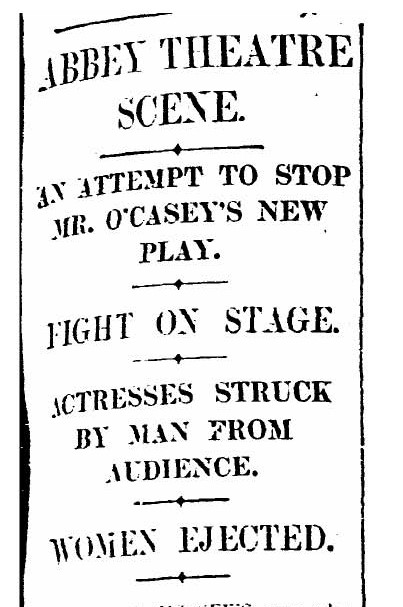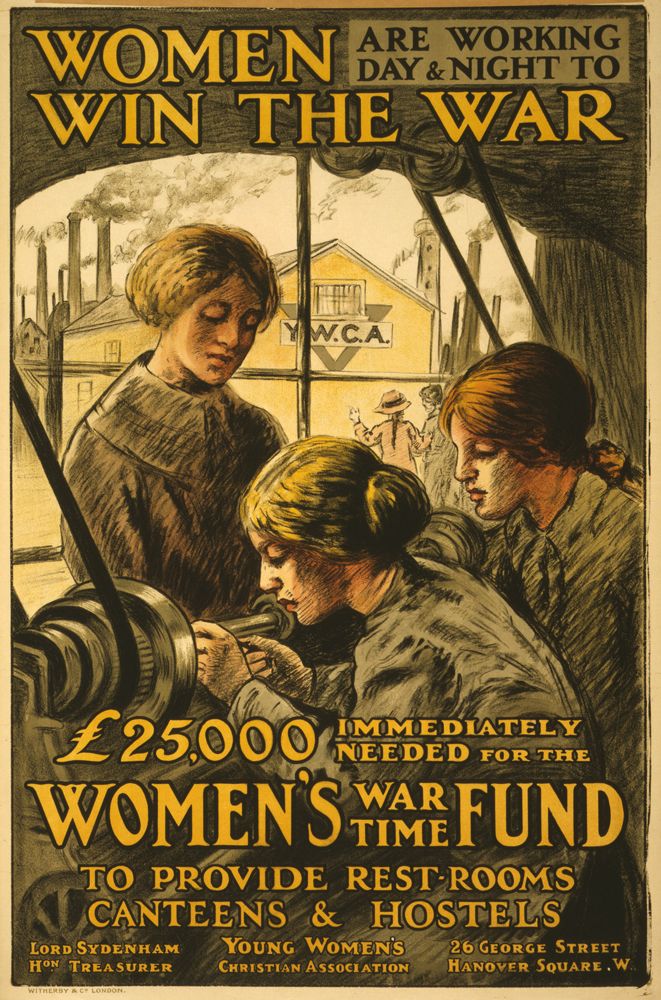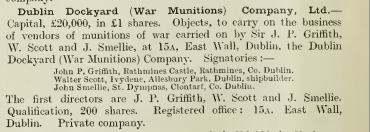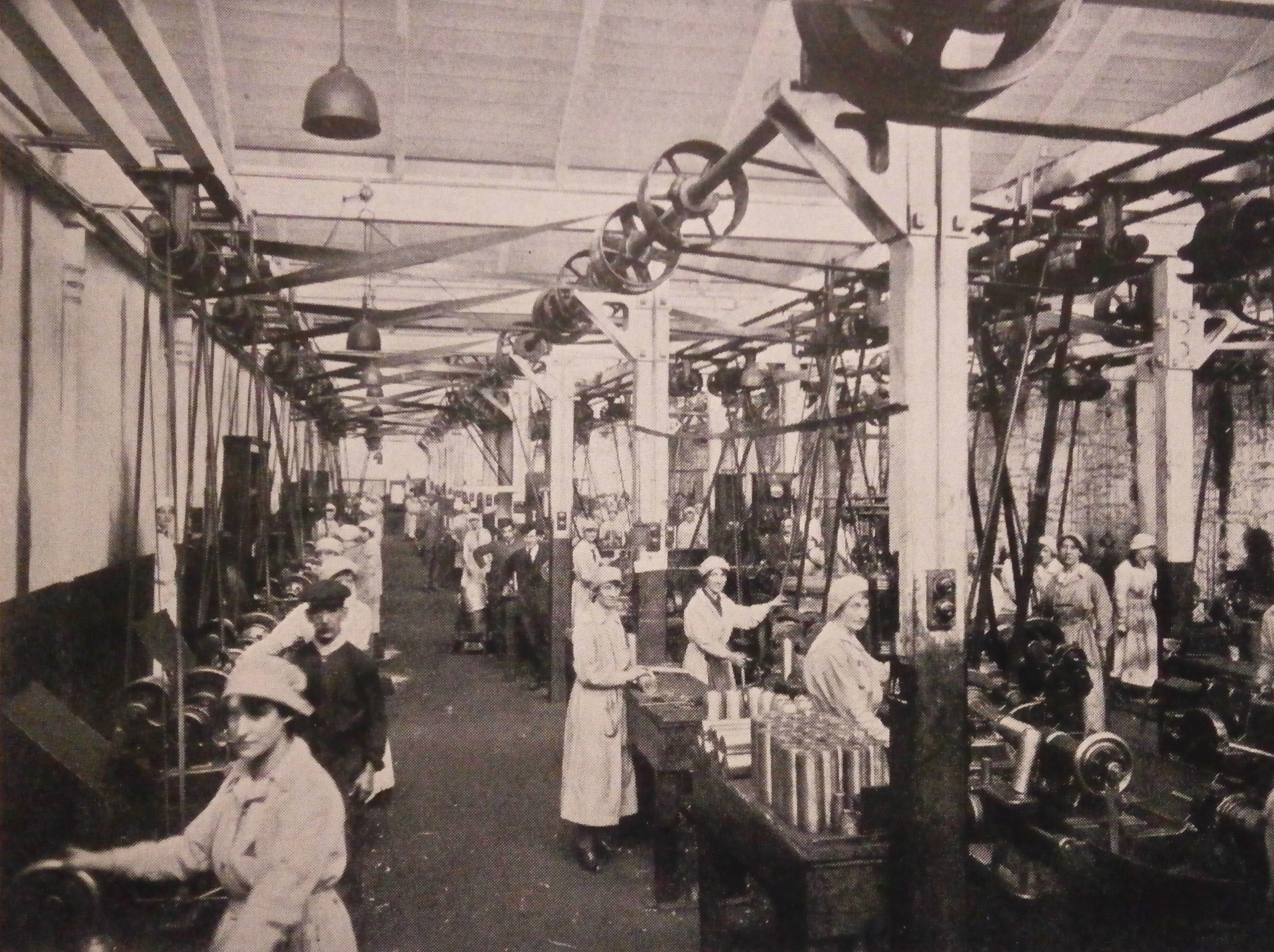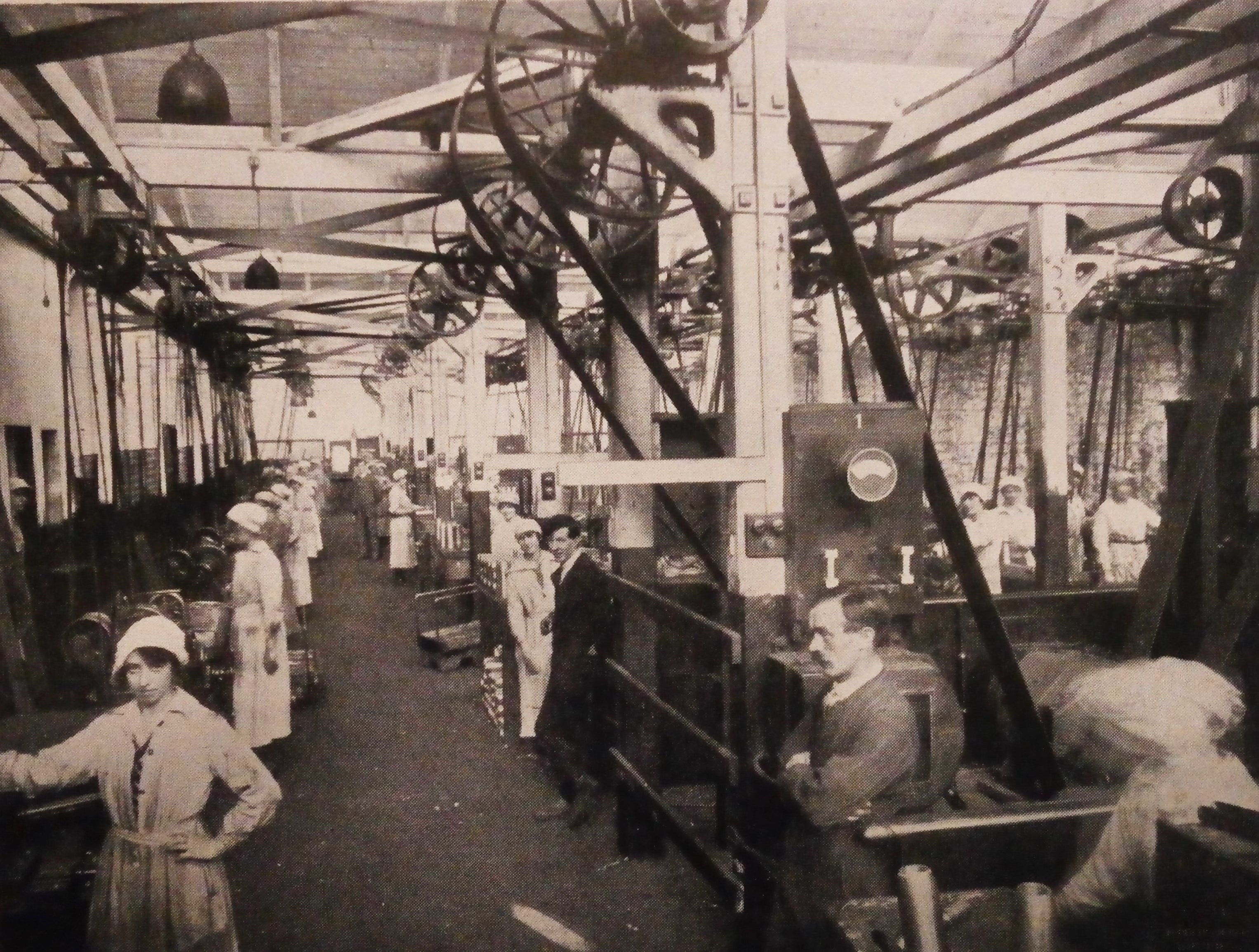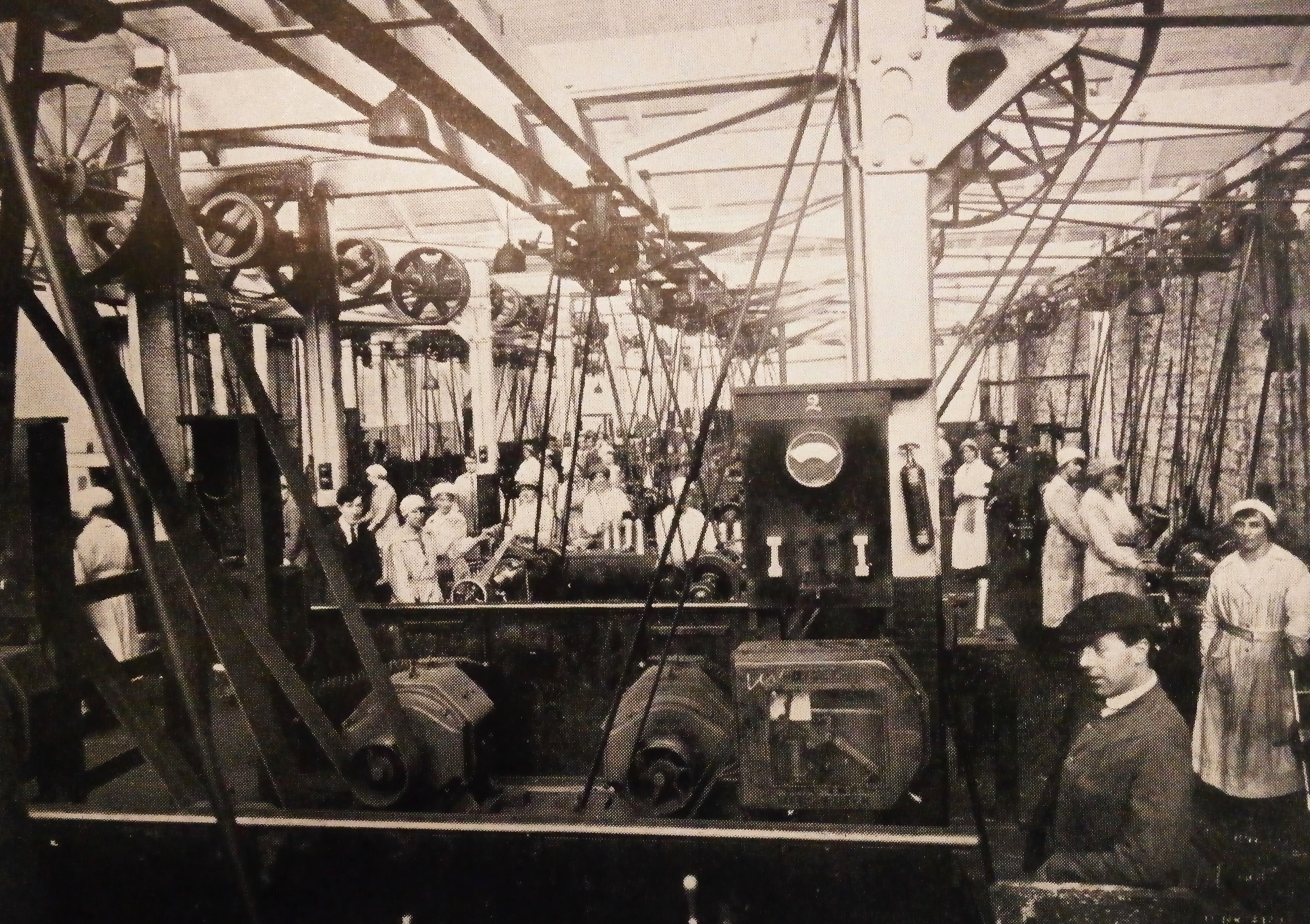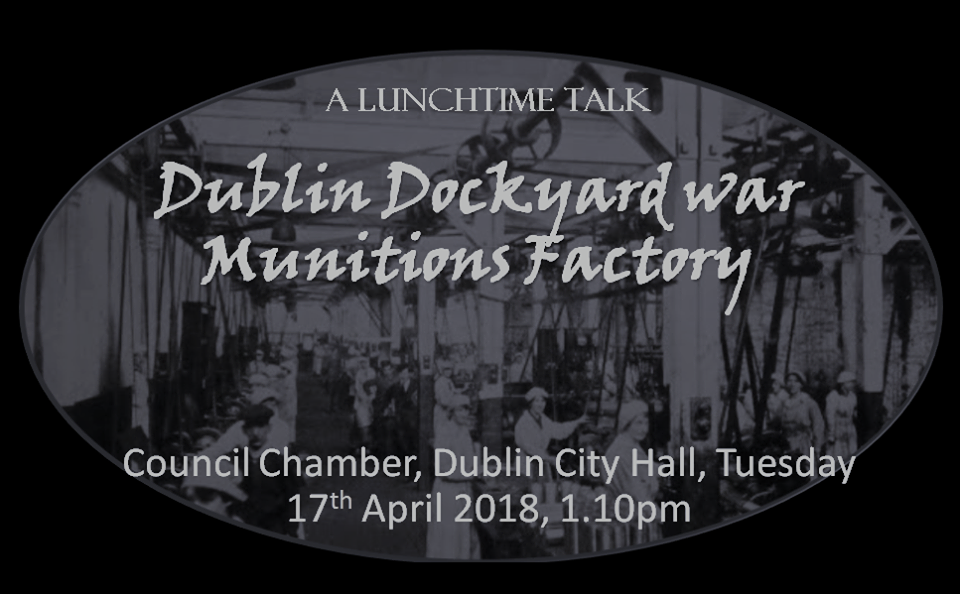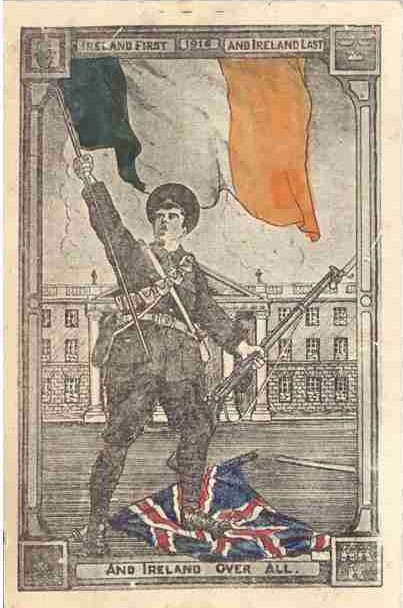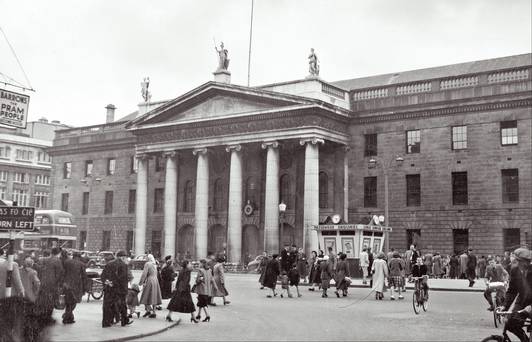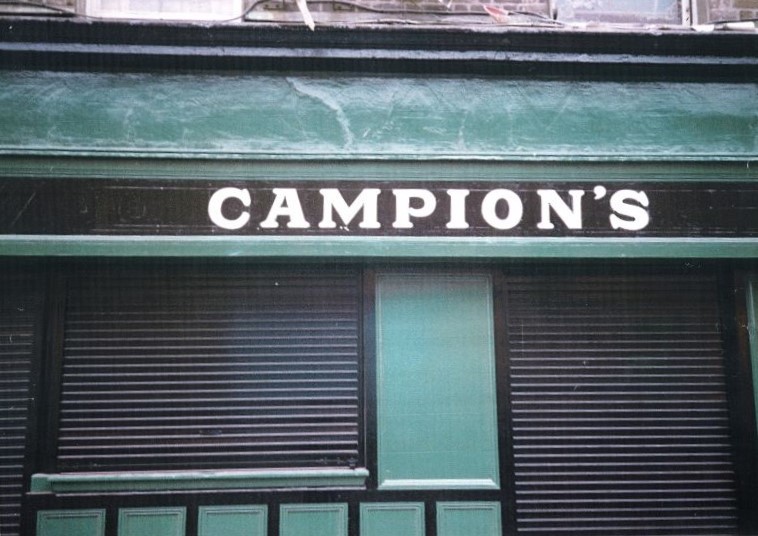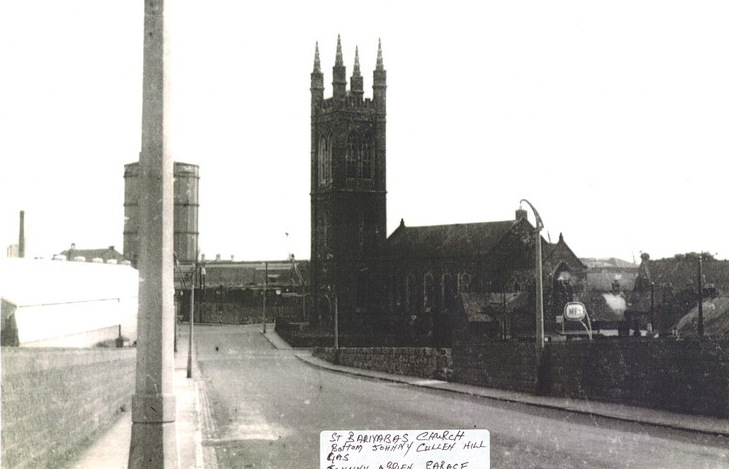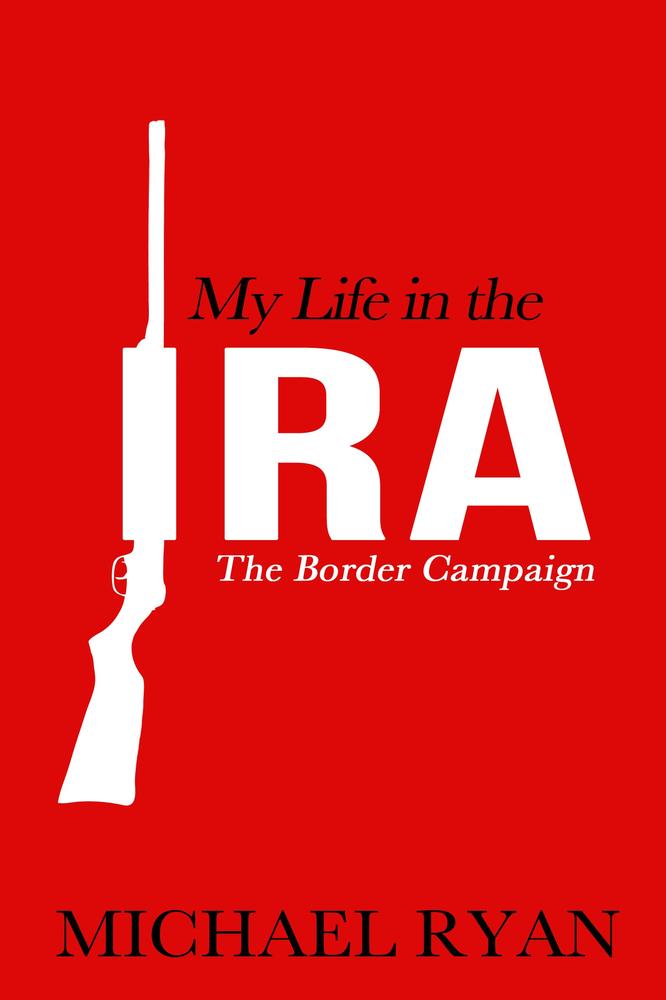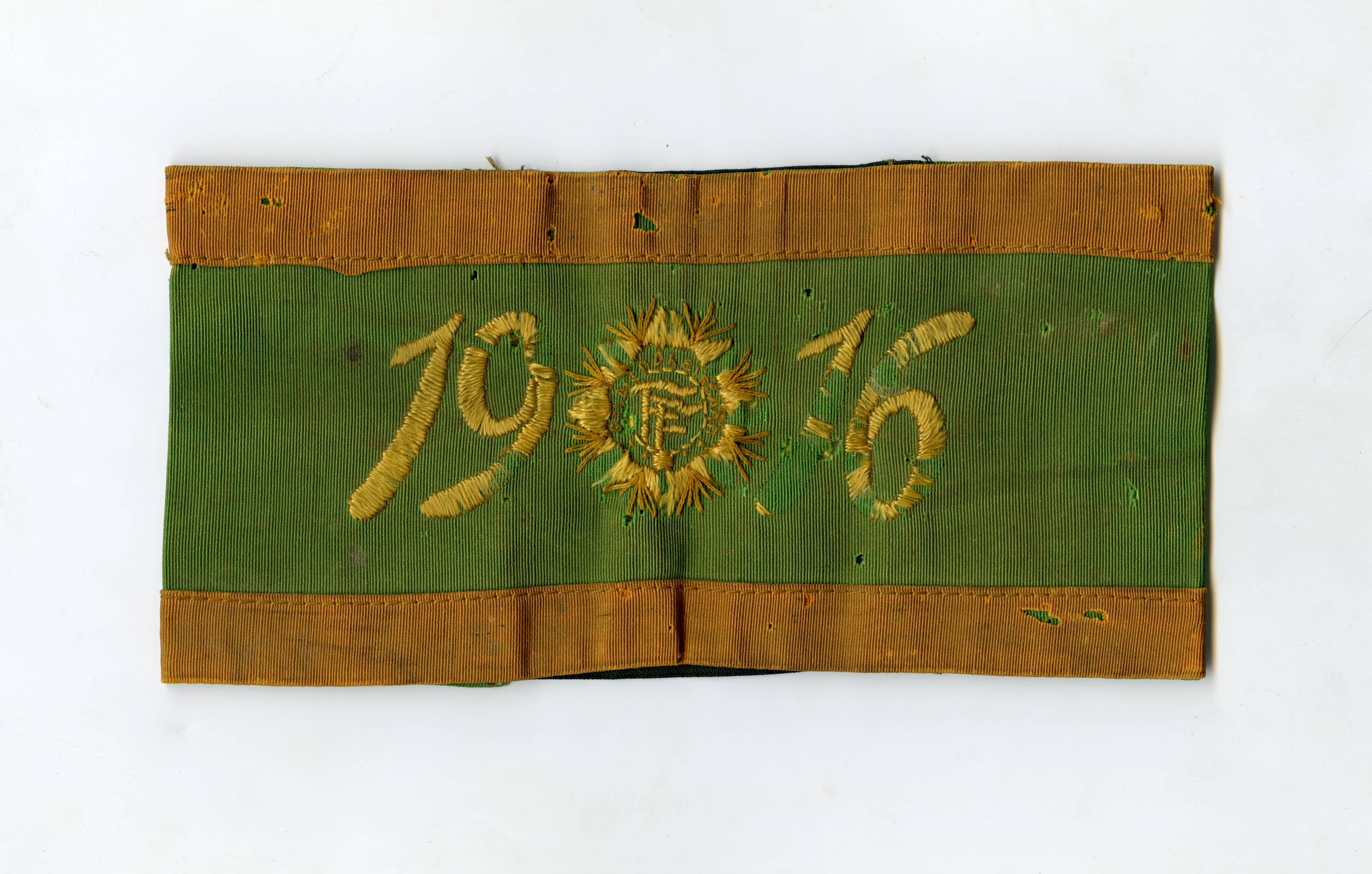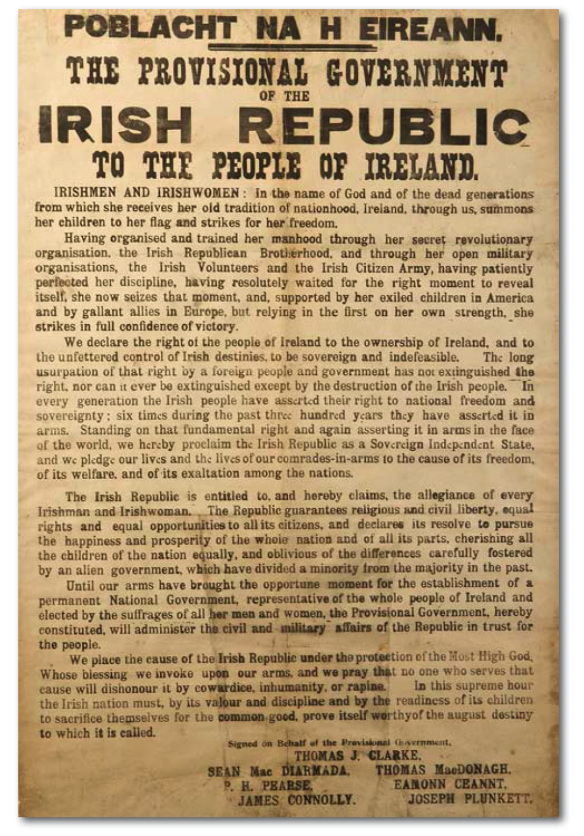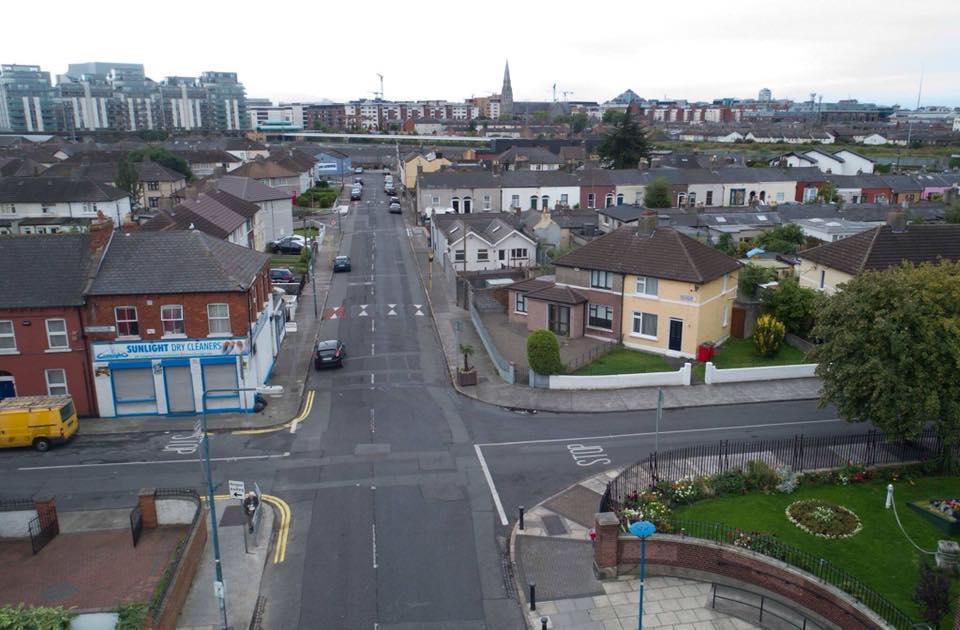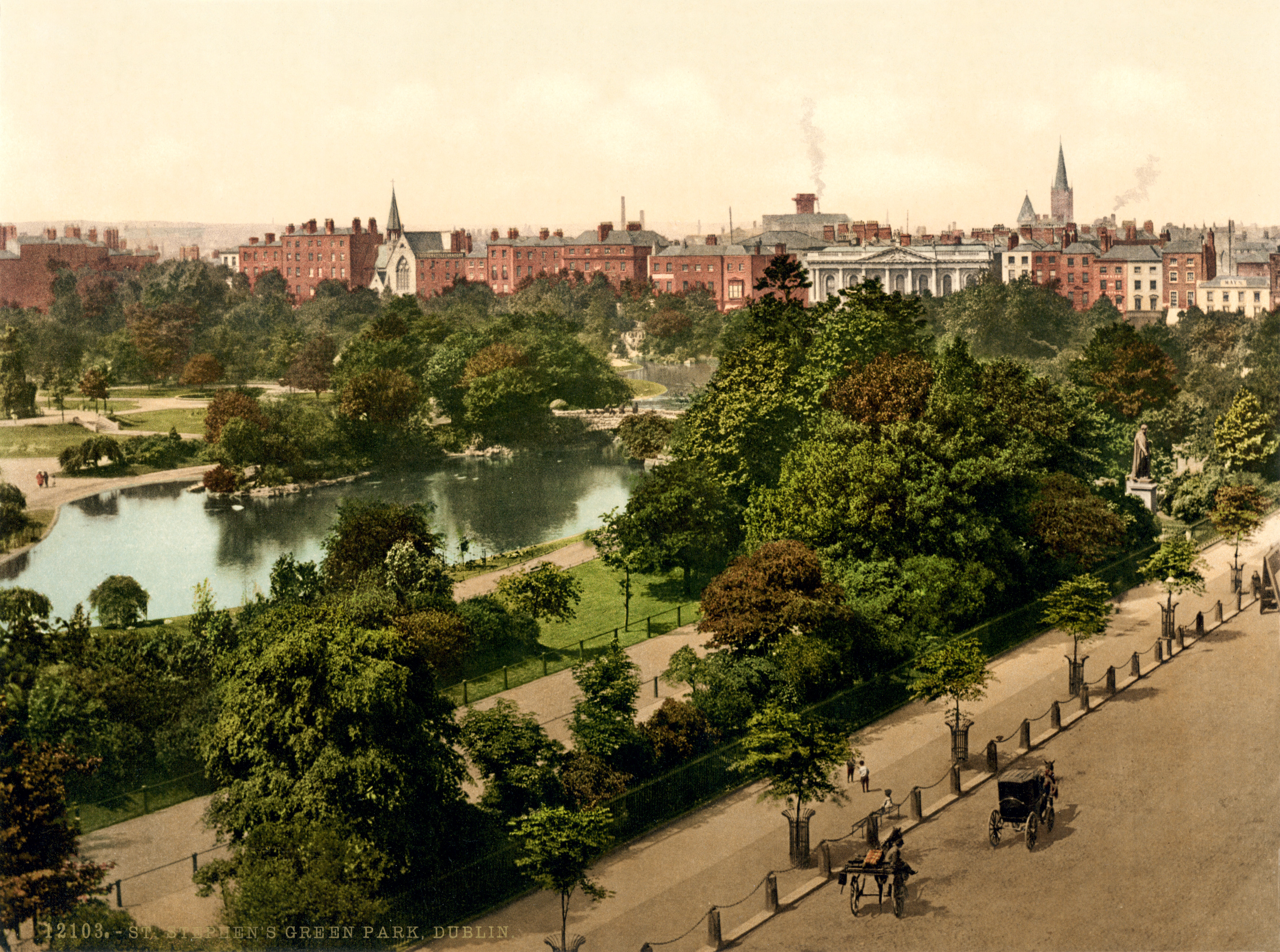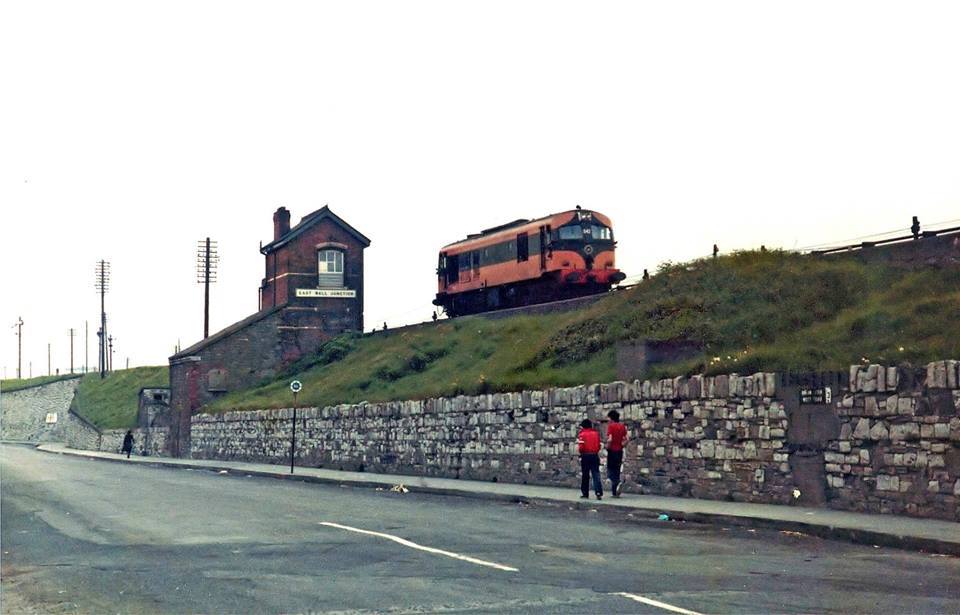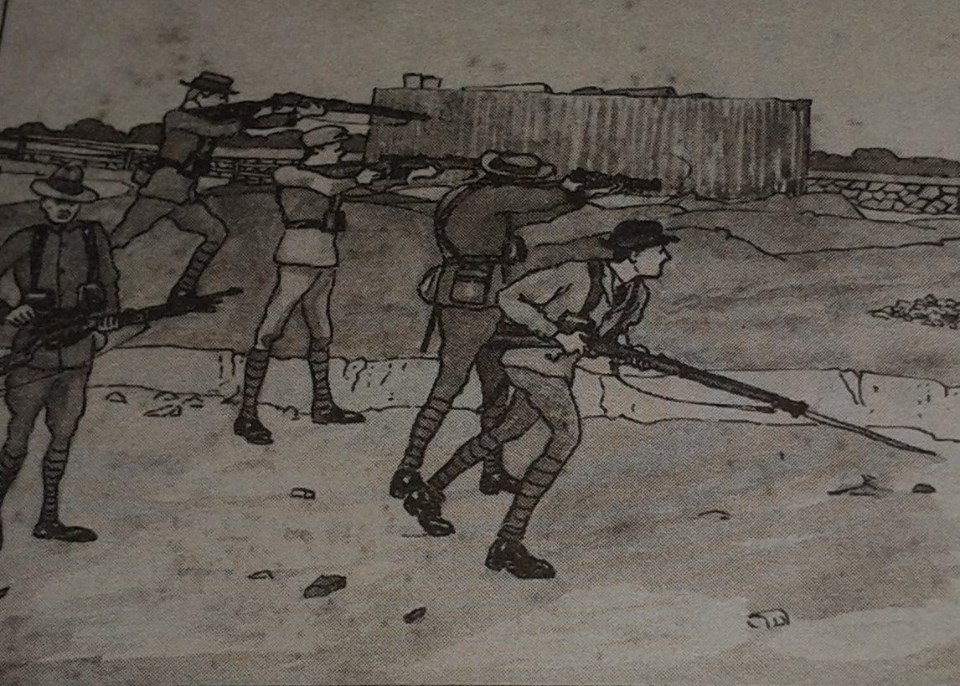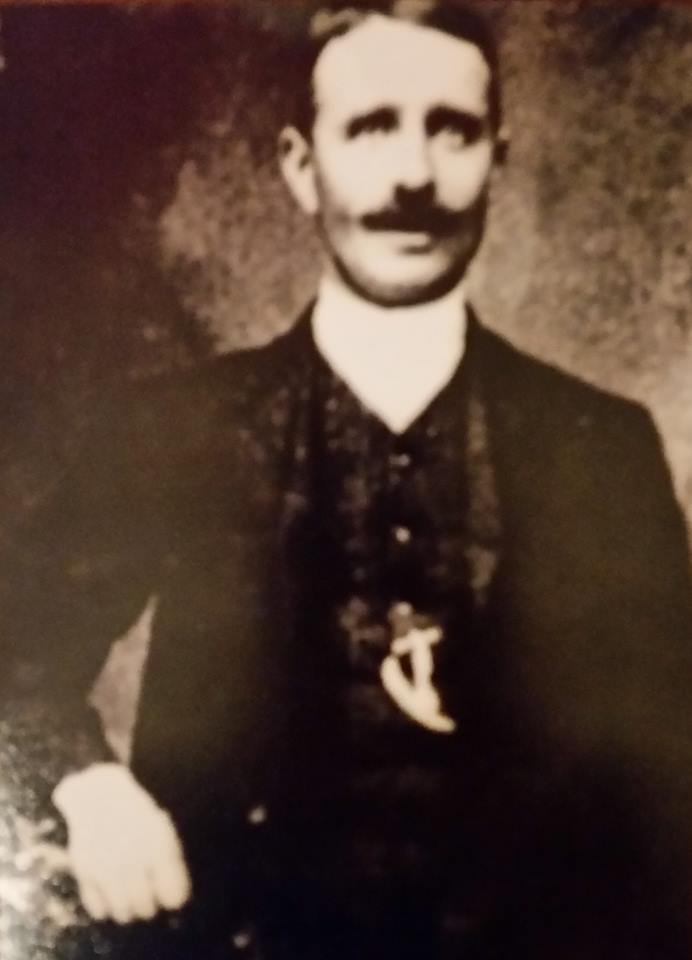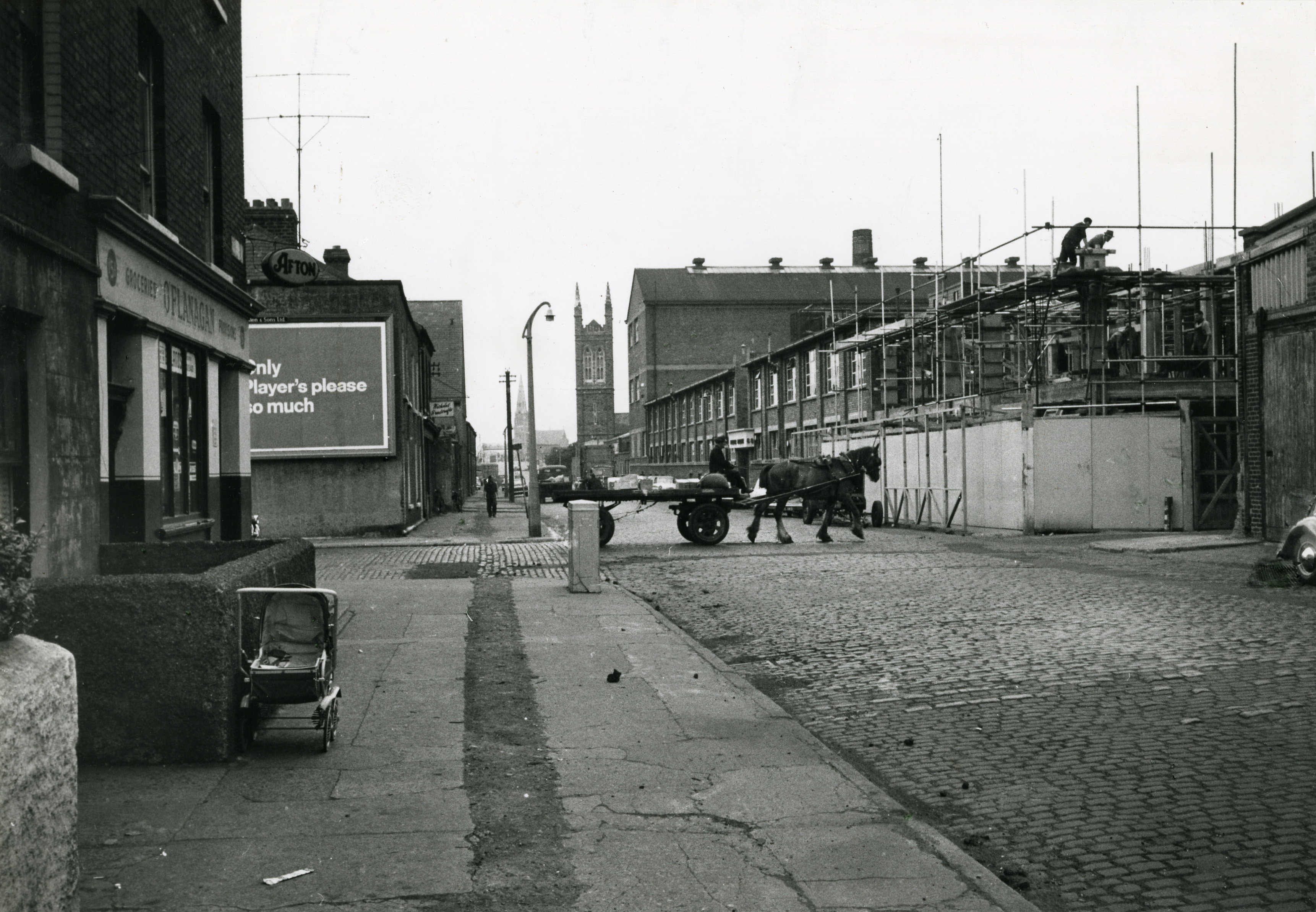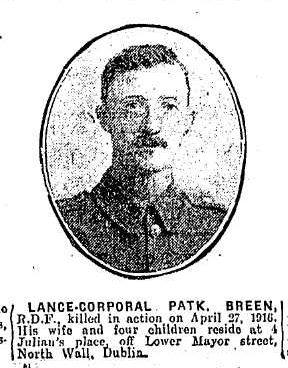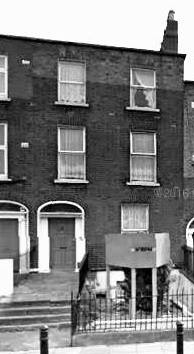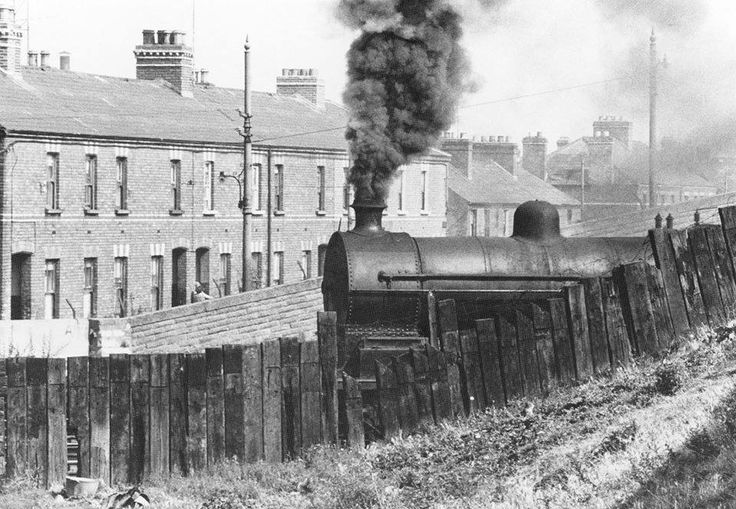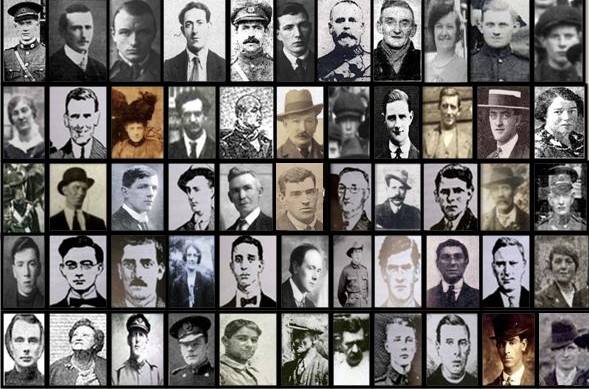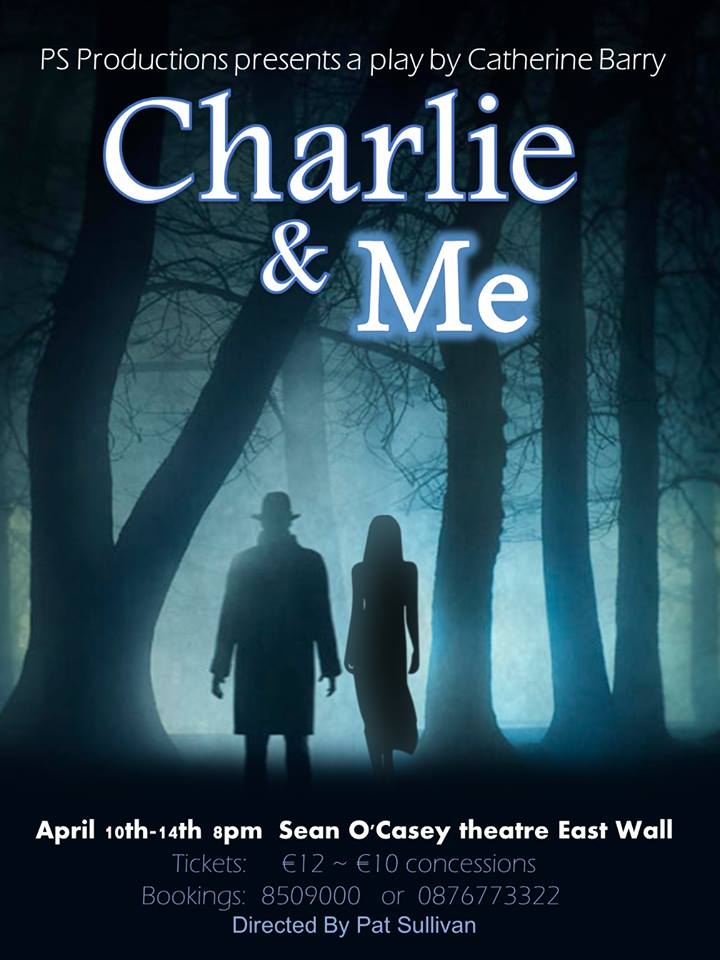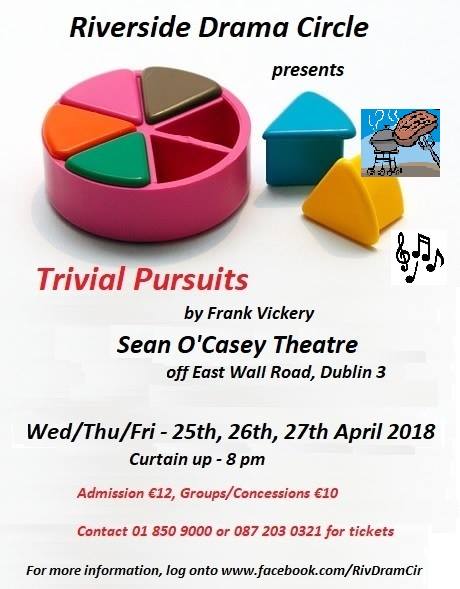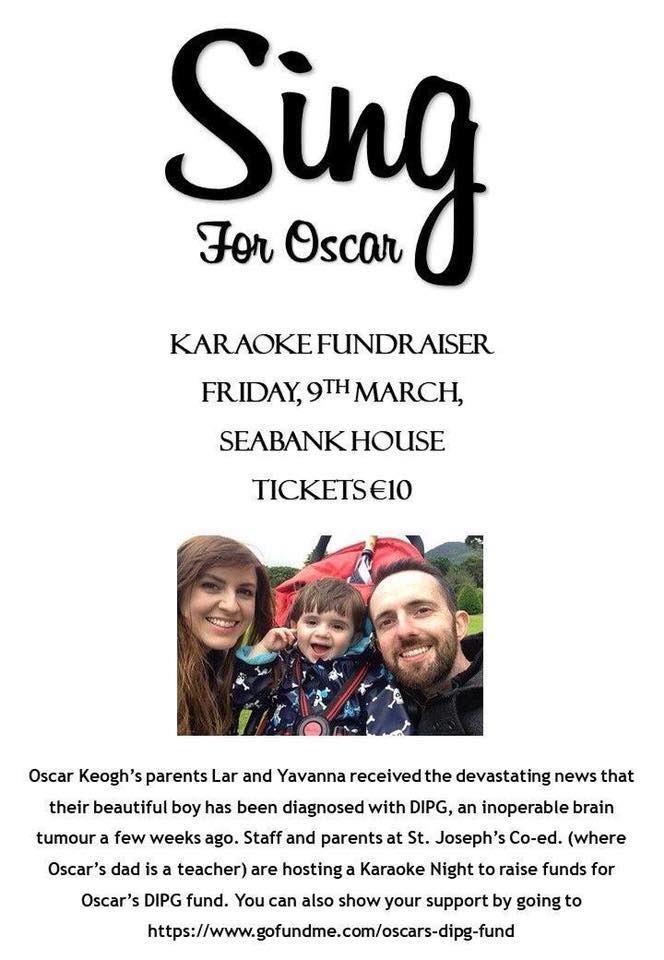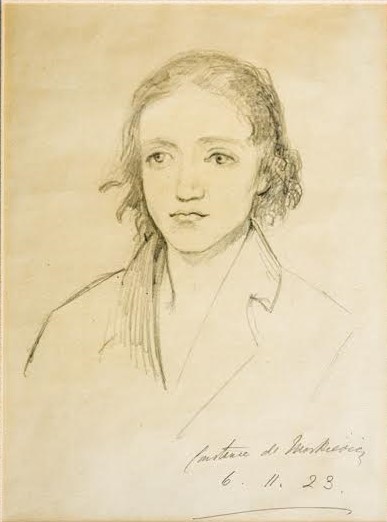May 13
Sean O’Casey Festival – Auditions and workshops
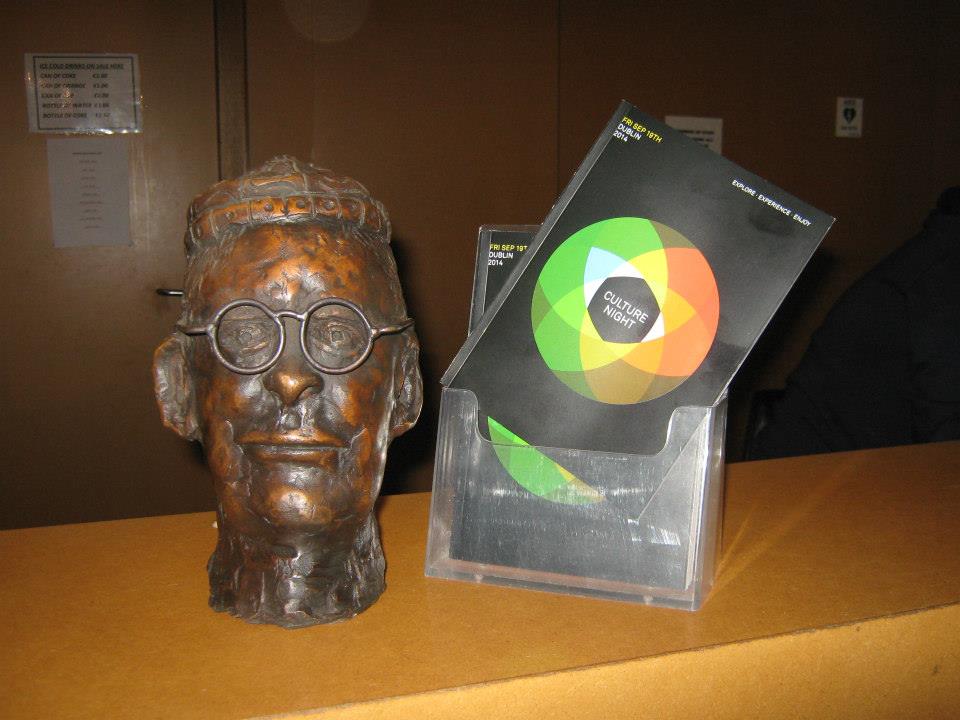 The Sean O’ Casey Theatre will be the venue for a festival celebrating Sean O’ Casey, his life and works in September 2018.
The Sean O’ Casey Theatre will be the venue for a festival celebrating Sean O’ Casey, his life and works in September 2018.
Planning is in place as part of the festival for community productions of Sean O’Casey Plays including one of the ‘classics’ and a selection of Short plays .
Do you want to be part of this exciting project ?
Two evenings of Workshops / Audition be taking place . These will be hosted by Fran Laycock (of the Sean O’Casey Theatre) and are for all ages interested in participating in the productions .
The Workshop / Auditions are taking place at the Sean O’Casey Theatre on Wednesday and Thursday 16th & 17th May , from 7pm to 9pm each evening.
Opportunities are available across all theatre elements:
There will be not only casting for the performances but also for those with an interest as designers ,Production & Stage Management .
To reserve a place on the workshop or to find out further details:
Contact Fran at : laycock.fran@gmail.com
Apr 13
“Coining it” – Paydays and pilfering at the Docklands Bomb factory
In 1915 munitions fever struck Ireland as the possibility of high paying jobs of £4-10 per week in English Factories presented themselves, coupled with the announcement that Ireland was to get its own munitions industry with National Shell Factories being established around the country. Similarly, Private Industry took up the challenge in the form of companies such as Hutton’s of Summerhill and Ashenhurst Williams of Store Street (manufacturing precision parts for bombs) and the Dublin Dockyard Company (which manufactured the actual shells themselves).
By May 1917 nearly 18,000 Irish people had emigrated to work in the English and Scottish Munitions Industry causing one Limerick Newspaper to comment that Irish people felt “money was to found on the floors of English Munitions Factories the way shells were found on the Irish seashore.”
One young Dubliner seems to have felt that Irish Munitions Factories should present similar possibilities. Patrick Robinson was a 15 year old messenger-boy from the North Inner City. Robinson worked at the Dublin Dockyard War Munitions Factory which from 1916 produced 18 pounder shells throughout the First World War. 95% of the staff at the factory were women, due to an arrangement with the Amalgamated Society of Engineers called Dilution. Through this, women replaced men in the workplace thus freeing the men up to fight in France. Due to a successive number of agreements their pay was rather good with some of the girls making up to £2.10.0 per week. Sean O’Casey mentions a Dockyard munitions worker called Jessie Taite, “coinin’ it in”, who had over £200 in her Post Office saving account.
Young apprentices, on 4 shillings per day, could only look on envious, with the likes of messenger-boys and other unskilled laborers being left behind in their wake. The Dockyard was known for being an extremely good employer with few industrial problems from its establishment under Scottish born John Smellie in 1901. Ironically, strike action would escalate throughout the war years of 1916-18, almost exclusively involving apprentices, who due to the terms of their indentures, were prohibited from earning any of the big money on offer. These were unsuccessful. Smellie, having proved his point, would usually let them off with a warning and so they avoided the punitive financial penalties liable for illegal strike action during the war, often involving up to several months wages.
Robinson lived in Lower Gloucester Street with his widowed mother and sister. It’s likely that his meager pay had to stretch to support the family which would have put him under some pressure. Perhaps he found it humiliating to see girls, some the same age as himself, making a man’s wages. Whatever the reason, rather like the Limerick Newspaper suggested, he began to see the possibilities of all the scrap metal lying around the machines in the Dockyard Munitions Factory.
On the evening of the 27th July 1917, when coming off shift, James Bearsley, the Munitions Factory Foreman, noticed some suspicious bulges in young Robinson’s pockets. Searching him Bearsley found that they were copper bands used in attaching fuses to the 18 pounder artillery shells. Taking him to the factory Manager, Mr. Royce, Robinson confessed that he had taken similar rings before; he apologized, and then offered to pay the £2 he had received from a scrap dealer in Gloucester Place for the rings that he’d taken previously. Royce patiently explained to Robinson that it wasn’t that straight forward. All metal used for making artillery shells were supplied to the factory by the Ministry of Munitions and had to be accounted for. Scrap metal was charged for by the ministry as they could be sold at a profit and the Ministry was opposed to profiteering. However, these rings were not scrap, and directly affected the Factories production schedule. The factory was contracted for a specific number of shells each month. The fuses, and the copper bands which attached them to the shells, were made by separate contractors and supplied by the Ministry. An exact number, matching the Ministry’s order would have been supplied and without the full compliment of copper rings the factory would not be able to fulfill their order.
Under pressure, Robinson began to realise the full implications of what he’d done and agreed to co-operate. Shortly afterwards, Albert Siev, a 24 year old Polish born scrap-metal dealer at Gloucester Place, was arrested for receiving several consignments of stolen rings and prosecuted under the rather severe Defense of the Realm Act (DORA).
It’s probably worth noting that quite a number of Irish Citizen Army and Irish Volunteer members worked in the Dockyard, the Munitions Factory, and Dublin Port and things did “vanish” from time to time. It was something of a joke among Dockyard foremen, well into the 1950s that when tools and equipment went missing, they would usually explain it with “there must be another revolution coming soon.”
Having given evidence at Siev’s trial, Robinson avoided prosecution, and it seems may have even held onto his job. It may have seemed harsh to prosecute Sieve under the DORA Act but it was a serious matter and there may have been suspicions that they would ultimately end up in the wrong hands. Both Sieve and his young female assistant denied having ever seen Robinson in their shop.Whatever the authorities suspected they could not prove their case against Siev and he was dismissed on the 28th August. Two years later, while in business with his brother George, he was arrested for handling stolen bicycles, so it seems likely that his buying the copper rings was motivated by profit rather than any political ends.
If you have any clarifications, corrections or additional information please contact us. We are particularly anxious to hear from family members of women (or the small number of men) who were involved with the Munitions Industry. All contributions or assistance will be fully acknowledged and credited.
eastwallhistory@gmail.com
As part of the ‘Irish Women and the First World War’ series taking place at City Hall , Hugo McGuinness will be giving this talk next Tuesday 17th April in the Council Chamber ,City Hall, Dame Street .
Apr 02
Easter’s past – From the GPO to East Wall in the 1950’s
“…here we are in Caledon Road, a relief but a letdown all the same. For it was as if our journey back in time had only been an illusion”
Mick Ryan was born in East Wall in the 1940’s. He recently published his first volume of autobiography entitled “My Life in the IRA: The Border Campaign” (Mercier Press). While mainly concentrating on the 1950’s and early 60’s, the first quarter of the book covers his early life in East Wall. It is a fascinating insight into our community – looking at his school days, the Church, well known local personalities (such as Frank Cahill and Fluther Good), the dockside industries and his working days at Palgrave Murphys. In this extract he recalls a child-hood trip to the Easter Commemoration in town and the walk home to Caledon Road. Enjoy :
Easter was another time for a trip, this time to the city centre to watch military parade march past the general post office (GPO). It was always thrilling to sit on my father’s shoulders and watching the thousands of soldiers and the armoured cars go by. The blood would race through my veins at the sound of the pipe bands. The leaders of the state standing solemnly to the attention were reminiscent to my child’s mind of the soldiers of Easter 1916, when they took over the GPO on that historic Monday. I would feel a tremendous elation at the folk memories that stirred within me, and I longed to have lived in that great time and played my part alongside the heroes, Connolly, Pearse and Ceannt, or in the Fianna of the romantic Constance Markievicz.
And in the years when Easter was late, the day itself would be fine, with the promise of the balmy days of June to September, which seemed to suit the implied promise of what the Easter parade commemorated. We would go home by way of Madigan’s pub, where Father would buy a pint of frothy topped Guinness for himself and a glass of lemonade for the lad. He’d have another pint and then we would be out for a walk home by the way of Marlborough Street, Abbey Street, past the old Abbey Theatre. He’d always make some remark about F.J. McCormick or some famous name who’d be playing there in The Plough and the Stars or the Righteous are Bold, none of which meant much to my young mind, but I’d do my best to look impressed.
Then we’d walk on to Beresford Place to within a few yards of the old Liberty Hall, where Father would point and say “That’s the place where poor Jem Larkin and Connolly spoke to thousands of the strikers in 1913. Ah Jem Larkin was a great man. You should have heard him talk to the men. He wasn’t afraid of anyone – the Peelers, them dirty DMP (Dublin Metropolitan Police), or (William) Martin Murphy either….His son isn’t the man Jem was.”
Then we’d travel around by the railings on towards the Custom House. That’s where the IRA burned all the government records in 1920, and that was a big blow to the British that time. Look, you can still see the bullet marks made by the big British guns in the Tan War. And, right enough, there were large pockmarks that looked like they were made by bullets. And all the history of that marvelous epoch would come alive for me.
On down by the Liffey towards the gantry, over past the canal bridge, and the ships moored to the quays; past Campion’s pub, where there were still a few stragglers making polite exchanges of “Nice day”, “Bad Day”, or whatever. We would pass onto Wapping Street, a dead street, like the rest of the quays on a Sunday, deserted and depressing, with nothing but the steady thrumming of the Pigeon House pumping station in the background.
At last we’d reach Barnabas Church, a Protestant church, and move up Johnny Cullen’s Hill. Not too far to go now, and just as well. I’d be very tired and the hill was steep enough. At the top we had a view of the many railway lines passing under the bridge, and the cranes of the dock stretching their giant arms to the sky. Down the hill now, on the home stretch, on to East Road, past Cullen’s Yard and Boland’s, Dinan Dowdall’s and here we are in Caledon Road, a relief but a letdown all the same. For it was as if our journey back in time had only been an illusion.
*************
“My Life in the IRA: The Border Campaign” by Michael Ryan was published by Mercier Press (2018) and is a very interesting read both in terms of Political history and a social history of Dublin Docklands in the 1940′s and 50′s.
Apr 01
Easter 1916: Stories from the North Dock
During the Easter Rising Centenary Year 2016 local history groups in the Docklands were busy ensuring that the anniversary was properly commemorated. The East Wall History Group and the North Docks Peoples Voice Project undertook extensive research, held and participated in a number of talks and walking tours. We also published a booklet and numerous articles on-line. On the exact dates of the Rising, each day we published articles recounting what happened a 100 years earlier. This is just a small selection of extracts from thismaterial, recalling some local heroes and events, just some stories from a week in the life of the North Docks at a turning point in Irish history.
The First casualties of the Rising
Anyone examining the 1916 Remembrance Wall in Glasnevin cemetery might be surprised to see the first casualties listed as occurring on 21st April, three days before the Rising began.
Charlie Monahan, Con Keating and Donal Sheehan were members of the Irish Volunteers, dispatched from Dublin to Kerry to assist in the landing of weapons for the Rising. On Good Friday evening their car plunged off the pier at Ballykissane and the men drowned. Belfast born Charlie Monahan had lived for some time at number 70 Seville Place, North Wall. He was a member of the St Laurence O’Tooles Club.
His companion, the Limerick born Donal Sheehan had joined the Irish Volunteers in London, returning to Ireland early in 1916. He was part of the Kimmage Garrison, made up largely of British born volunteers, based in the house of Joseph Plunkett at Larkfield, South Dublin.Also accompanying him was Con Keating. Originally from Kerry, he had also been resident at Larkfield, delivering ‘wireless’ training to volunteers here.
Charlie Monahan, Donal Sheehan and Con Keating were the first casualties of the Easter Rising, 1916.
Monday : From East Wall to Stephens Green
Easter Monday, 24th April 1916. By the afternoon an Irish Republic had been declared and the British Empire had been challenged. But for the people of East Wall, the first indication that this Day was going to be any different was earlier that morning, and occurred at the junction of Church Road and St Marys Road. Sometime shortly after 9 am a group of men gathered here and would soon set about the serious business of revolution.
James Fox had walked the short journey from his home at number 9 Hawthorn Terrace to the rendezvous. He would not have gone unnoticed, for what he was carrying was worthy of attention- a recently acquired Lee Enfield Rifle, which he would put to good use in the days to come. His weapon would certainly have been the envy of many of his fellow insurgents, the majority being equipped with the much inferior and obsolete ‘Howth Mausers’ or shotguns. One would later recall Fox’s activity during Easter Week and comment “prior to which, he on the 19th April, confiscated a Lee-enfield Rifle from a British Soldier at Ballybough, which he later used at Stephens Green”.
But before engaging in any combat, there was other work to be done. Arriving first, a glance down St Marys Road and he would have seen his fellow Irish Volunteers leave their houses and head up to the corner. Tim O’Neill from number 8 , Patrick Kavanagh from number 32 and Christy Byrne from number 45 joined Fox, as did Joseph Byrne from nearby Boland’s cottages (just off Church Road). All were members of E Company, 2nd Battalion, Irish Volunteers, who were based at Father Matthew Park, Fairview. They had received their mobilisation orders the previous evening, and had a very important early morning task to perform. (There may have been a sixth man present).
Under the command of Tim O’Neill, they quickly commandeered two wagons and horses. From where these were taken is unclear, but there were plenty of possible locations nearby. Cullen’s transport was based on East Road, and Nugents stables were located behind Seaview House. However, as Kipples Dairy (with its own yard and sheds) was situated at the junction where they had gathered it is likely to have been from there.
Having procured the two vehicles and horses they were soon on their way. One team made their way to a house in Drumcondra to gather rifles and home-made bombs, while another travelled to a variety of locations around Fairview and Ballybough collecting a quantity of rifles and ammunition. Their ultimate destination was Stephens Green, where they discharged their cargo to Commander Michal Mallin and Countess Markievicz. The East Wall five were posted to a section near the Shelbourne Hotel, where they took charge of the gate opposite Kildare Street.
Also posted in Stephens Green that fine spring day were two other East Wall men, the brothers Patrick and William Chaney from Northcourt Avenue. (Upper, Middle and Lower Northcourt–situated roughly where the Church now stands- were demolished and replaced by the Corporation Houses on Caledon Road and St Marys Road). The Chaney brothers were both aged in their early 30’s, and had been members of the Irish Citizen Army since it’s formation during the lockout of 1913. Unlike their Irish Volunteer neighbours, they had not set out from home that day. They had both been on duty at Liberty Hall since March, as part of the permanent ICA guard posted there, serving on a night shift after their days work a number of nights each week. As the date planned for the Rising drew near, they had also been engaged in the manufacturing of munitions which took place in the building. Setting off from Liberty Hall at noon that day, a contingent of the Irish Citizen Army had marched up Grafton Street, cleared visitors out of the Green and began to erect barricades and dig trenches.
The Stephens Green / College of Surgeons garrison was predominantly Citizen Army, with the five Irish Volunteers from East Wall something of an exception. Throughout the week they were amongst a group which tunnelled through the walls of adjacent buildings. All five would survive the week of intense combat here until the surrender on Saturday afternoon. They would soon be together at Frongoch Internment camp in Wales, where they would also be reunited with their neighbours and comrades who had served at other garrisons across the city. May Kavanagh, the 18 year old daughter of Patrick Kavanagh also served here as a member of Cumann naban , and in later years would recall “when she stood beside her father … and shot it out with British soldiers”.
British soldier dies on West Road:
The picture below shows the Railway signal box on West Road. It was here that at least two casualties occurred on Easter Monday 1916, in the opening hours of the Rising.
Monday afternoon, 24th April 1916. British troops under the command of Major Harold Fownes Sommerville had just engaged in a short but sharp shoot-out with the Irish Volunteers on the Wharf Road (now East Wall road). They had marched from the Bull Island Musketry School and were ordered to take control of the Docklands area. Under fire from volunteers on Leinster Avenue, they had dashed down the Wharf road and turned onto West Road. Some of them proceeded through the streets of East Wall to reach the Docks, while others scrambled up the rail wall to make their way along the tracks.
It was here that John Henry Sherwood of the 2/6th South Staffordshire Regiment was killed. The official verdict records that it was an accidental death, caused by a colleague while cleaning his rifle, however British Army reports we have seen confirm he was shot by members of the Machine Gun Corps. John Henry Sherwood was 19 and from Bilson, near Wolverhampton. Over the next few days he would become the most reported casualty of the Rising in the English Newspapers, reported as being shot by one of his own.
Also shot at this location was Paddy Whelan who operated the signal. He had stepped out to see what the commotion was in order to send a report up the line to Amien Street Station. A bullet hit him in the cheek, though it would not prove fatal. British troops would occupy the signal box and patrol the railway line for the remainder of the Rising.
Nearby houses, such as those on Moy Elta Road and West Road were peppered with bullets. This was only day one of what was going to be a tense and dangerous week for the local residents.
Tuesday: Two North Dock casualties at St Stephens Green
As dawn was breaking on Tuesday morning 25th April (the second day of the Irish Republic) the calm of the day was broken by the chatter of machine gun fire, as British bullets poured into the Rebel positions from the Shelbourne Hotel. James Corcoran from Seville Place was killed in the first burst, hit in the back of the neck. His body would lie where he fell until the following Sunday. Under intense machine gun and rifle fire from the overlooking buildings, the entire body of Rebels was withdrawn to the Royal College of Surgeons. Later that day another North Dock resident would fall victim to machine gun fire, being struck by twelve bullets while on the roof of the college. Despite his horrific injuries, Michael O’Doherty from Mayor Street would survive, only to die as a result of his wounds in 1919. Christine Caffrey, from Abercorn Road, was amongst the group that first secured the college building, having waved her revolver to drive away a hostile crowd that gathered to harass them. She would spent much of the week engaged in the dangerous task of travelling back and forward to the GPO headquarters with dispatches. On one occasion, when approached by a British soldier she started to eat the message and when challenged offered him a bag of peppermint sweets, and got waved on her way.
Wednesday: Denis Kelly – a civilian casualty on the Docks:
On Wednesday the 26th April 1916, a North Dock resident Denis Kelly died as a result of gunshot wounds he had received the previous evening. His wounding had taken place on the second day of the Easter Rising, when the docks area was already heavily occupied by British troops, who were being subjected to sniper fire throughout the vicinity.
Denis Kelly, was a goods checker at the London North Western Railway (LNWR) , North Wall. Kelly was born near Rathangan in County Kildare. Moving to Dublin he secured a good position with the Great Southern Railway at Kingsbridge (Heuston) Station about 1896. In December of 1909 he switched his employment to LNWR, where he worked as a checker at their North Wall Railway Station.
The Kelly’s lived at No. 13 North Dock Street. It’s unclear what took Denis Kelly out on the streets on the evening of Tuesday 25th April 1916. Some in the family believe he went out to seek food for his children, which suggests he may have been shot near the shop on Castleforbes Road. Another suggestion is that he was in the vicinity of New Wapping Street when a gun battle broke out and rushing for cover in a nearby shed he was hit by a stray bullet. Whatever the exact circumstances, Denis Kelly was wounded in the shoulder and lost a lot of blood before the ambulance arrived at 9.22pm. He died the following day from a combination of shock and haemorrhaging. Denis Kelly was buried in a mass grave of civilian casualties at Glasnevin Cemetery. His wife was in care, and he had three children. Following his death the children were brought up by relatives in County Kildare.
Thursday 27th April: A TALE OF TWO DEATHS
On the 27th April 1916 Lance Corporal Patrick Breen of the Royal Dublin Fusiliers was one of the 338 Irish Men who died in a German Poison Gas attack at Halluch in France. With an address at Julian Place (off Mayor Street) North Wall, Patrick Breen was aged 27 at the time of his death, and left behind a wife and four children.
One survivor of the horrific events recalled: “…the Dublin Fusiliers had been caught unawares and their casualties were very heavy. When it was over, I had the sad job of collecting and burying the dead. They were in all sorts of tragic attitudes, some of them holding hands like children in the dark. They were nearly all gassed and I buried about 60 of them in an enormous shell hole.”
The death of Breen occurred during the week of the Easter Rising. In response to the events in Dublin, German soldiers had placed signs in the trenches stating “Irishmen … English guns are firing at your wives and children”.
On the day that Patrick Breen died , if his wife and children were at home in North Wall they were indeed in extreme Danger from ‘English Guns’ , as their near neighbour Janie Costello from 113 Seville Place would discover when a moment of curiosity caused her death. As soldiers were making house to house searches her curiosity got the better of her and she looked out the window. A soldier taking cover in a doorway spotted the movement and opened fire, hitting Janie through the lungs. “I’m shot! Oh! Katie, I’m done!” were her last words before she fell lifeless to the floor.
The shots were barely audible to her flatmate Katie Lewis, who was beside her as she died. Two bullets had passed through Costello’s lungs, one embedding in the door jamb of the room, the other in the wall inches above a neighbour Mrs. Hanlon who was visiting at the time. The situation could have been far more tragic, with the possibility of more fatalities.
Ironically, two of Jane Costello’s brothers were serving in France with the British Army at the time of her death.
Neighbours shot as Troops swamp area
Jane Costello’s death was just one fatality in what would be a grim day in the Area. Another young woman was shot dead and amongst the wounded were two boys, one who would later die from his injuries.
Julia Crawford was aged 20, married just one year, when she was shot by British Troops at Irvine Crescent, East Wall. Despite the efforts of a British Major to save her live she died at the scene. The same afternoon two young boys were shot – 12 year old Edward Ryan and 8 year old Walter Scott. Ryan was hit in the leg and would recover, while Walter (who was hit in the head) would linger horrifically before dying in July. Walter and his family also lived at Irvine Crescent. It was a harsh year for the Scott family. His father had died after an accident in the Port in February, leaving Anna Scott with a number of children in her care.
Note: Irvine Crescent is now incorporated into Church Road, and is located opposite Johnny Cullen’s Hill.
A week under fire …and fired:
Arthur Hannon from 12 Saint Laurence Street was just 16 years old in Easter Week 1916. He was involved locally at the start of the insurrection, would serve in the GPO Garrison and would be present for the retreat to Moore Street and the Surrender. Though his brother James was a member of the Irish Volunteers and would serve at Jacobs, Arthur was not a member of any of the military bodies which set out to challenge the British Empire that Easter Monday morning .This would not remain the situation for long. Arthur first joined up with the rebels at Annesley Bridge and being youthful and in possession of a bicycle he was dispatched to get details on British Troop movements in the Docks. Recognised at Oriel Street as a rebel, when Biddy Latimer shouted out – “He’s a bloody Sinn Feiner” he quickly came under fire from the troops he had been chatting to, and gathering information from, but luckily escaped uninjured.
His career as an ‘intelligence gatherer’ at an end, he returned to the barricades at Annesley Bridge. He was posted to the Dublin & Wicklow Manure Works (where Ballybough house now stands). Here he was given another choice job- tasked with looking after a group of Volunteers from outside of the city who had no idea where they were. According to Arthur – “They were all from other parts of Ireland. I was the only Jackeen in the group, without me they would never have reached the post office”. Having guided them into the GPO Headquarters on Tuesday, he served from here through the remainder of the Week through to the surrender on Moore Street on Saturday. He carried messages back to Fairview and also the Four Courts, and was dispatched to help prevent the looting in the vicinity.
On armed duty within the GPO, he would decades later recall a significant incident – “The most clear and vivid memory I have of the week was my idol James Connolly leaving the GPO and his being carried back……I opened the door when Jim Connolly took six or seven men to attack the telegraph building and opened it again when he was carried in wounded”.
Reflecting on events surrounding the surrender he would remember that: “I was in some fish shop on Moore Street with the men I had been with since Monday. We stuck together in the Post Office and in the hectic dash across Henry Street and into Moore Lane. We really erected the barricades across Moore Lane .These men were all from Longford and Roscommon”. Afterwards he “spent the night bivouac on the lawn of the rotunda hospital when we surrendered. I spent the next week in Kilmainham barracks. I still stuck to my original group from Fairview”.
Due largely to his age Arthur was soon released. But it wasn’t all good news! During his activity he had been spotted by his boss, a Mr Templeton “who was in the crowd and spoke to me”, and upon his release he was informed that the firm of Hugh Moore and Alexander no longer required his service -“They didn’t want my kind”. Having lost his job as an office boy, he then went to sea to earn a living.
While his military career may have been short lived, he was still prepared to strike a blow for Ireland when the opportunity arose, as this escapade reveals – “I was in Dublin again in 1917 when on a dare (from Daniel McCarthy, boy scout leader) I climbed the ruins of the GPO and burned the English flag and placed the tri-colour of the Republic in it’s place”.
This is just a small selection of stories collected and shared by the East Wall History Group and the North Docks Peoples Voice Project.
The book “All the Brilliance of the Day” by Hugo McGuinness will be published later this year, a detailed account of the events of the Easter Rising in the North Docks.
If you have any family stories, photographs or other memorabilia please to share please contact us at
eastwallhistory@gmail.com
northdockpeople@gmail.com
Details from sketch by Charlie Saurin , Irish Volunteer , a participant in the ‘Battle at Annesley Bridge’ . Image shows combat at building site between Leinster Avenue and East Wall Road (where houses now stand).
Image: Bureau of Military History
Mar 17
Good Friday Pro-Wrestling @ the Sean O’Casey Centre
 Another evening of Pro-wrestling entertainment at the Sean O’Casey Centre , St Marys Road .
Another evening of Pro-wrestling entertainment at the Sean O’Casey Centre , St Marys Road .
Featuring our very own local talent Darren ‘Dazzler’ Kearney , destined to be a super star in the sport .
Darren will be competing for the Tag Team Championship and there’s no better place to be winning it than his ‘home town’.
Suitable for all ages .
Mar 13
“Love in the Wild” @ The Sean O’Casey Theatre
 An opportunity to see this fantastic one man play , which has been receiving rave reviews around the City . Written by Lisa Walsh , it is directed by Peter Sheridan and stars our very own Anto Seery . According to The Arts Review :
An opportunity to see this fantastic one man play , which has been receiving rave reviews around the City . Written by Lisa Walsh , it is directed by Peter Sheridan and stars our very own Anto Seery . According to The Arts Review :
“There’s a good chance you’ve already met Ger Duffy. Good chance too you tried to avoid having to talk to him. For Ger looks, sounds, and dresses like one of those. The ones that shoot up in a telephone box, get strung out on the Boardwalk, or hassle you for change for a hostel for the night. Not someone you’d want to spend any time with. Except playwright, Lisa Walsh, thinks it’s high time you did. You see Ger isn’t a junkie, he’s in recovery. Nor is he homeless, he has a loving family. He’s also an amazing swimmer, a lover of David Attenborough programmes, a massive Bob Marley fan, and seems to possess a magic Leap card that never needs topping up. And he’s also about to discover that second chances can come in the most unexpected ways. A slice from the life of a recovering addict, “Love in the Wild” showcases an exceptional one-man performance, in a brave production unafraid to take risks.“
“Alongside a detailed depiction of an addict in recovery, Sheridan, Seery, and Walsh beautifully articulate a rich, if subtle, commentary on Dublin.”
NOT TO BE MISSED
Feb 25
Fundraisers for Oscar Keogh : ( East Wall March 2018)
‘We’re giving our little boy the time of his life for however long that is’.
The response from the community of East Wall to the awful news about the illness of Oscar has been phenomenal. Individuals, clubs and businesses have all been eager to play their part in supporting his parents appeal in any way they can , with a number of fundraising events organised and very well supported . Here are two planned for March , taking place in the coming weeks. Please help publicise and support these efforts .
First up is this event at the Sean O’Casey Community Centre on Sunday 4th March :
The following Friday evening (Friday 9th March) the action switches to the Seabank House :
Please share this information and support the events. If you have details of other upcoming events , or want to send a report on fundraising that has already happened please send details to this community website at : eastwallforall@gmail.com
Further details of Oscars story can be found here :
https://www.gofundme.com/oscars-dipg-fund
Feb 04






